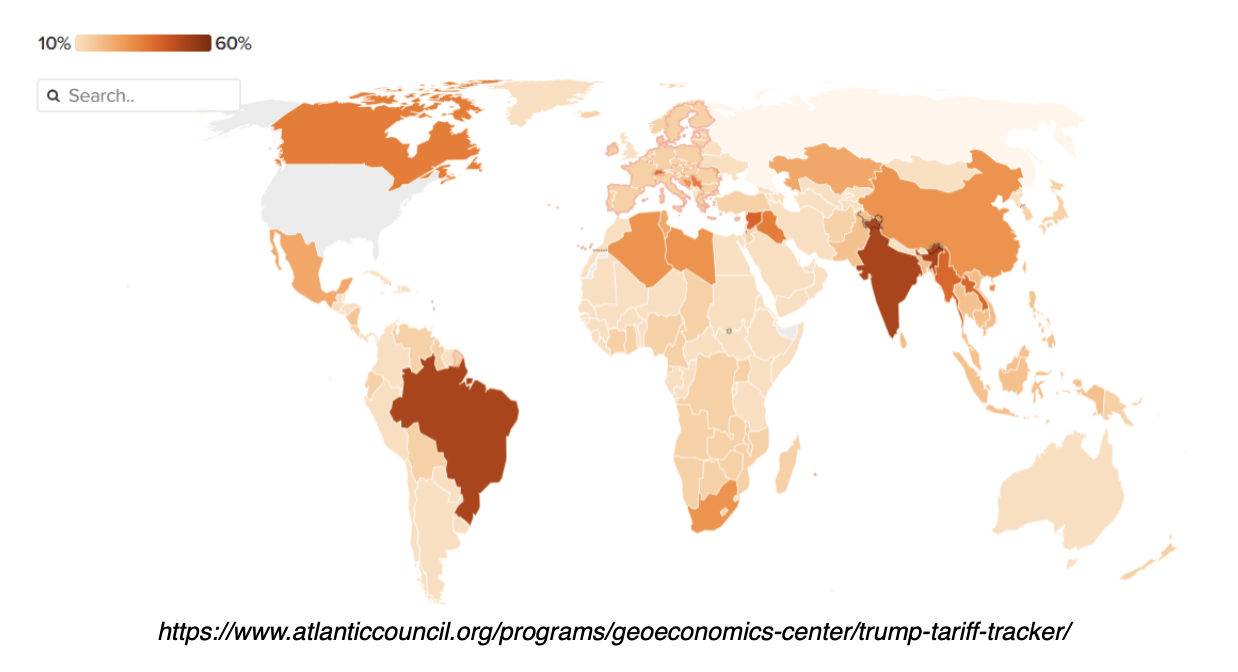The Tariff Situation
As you likely know, tariffs have been a major theme of the Trump administration in 2025. These tariffs are being implemented for a few reasons: negotiation/bargaining, punishment/sanction, and improving the U.S.’s economic situation.
As a reminder, a tariff is a tax on imported goods. For example, raising the tariff rate on Japan to 25% means that all goods that U.S. companies import from Japan will be subject to a 25% tax at the port of entry.
Punitive and Reciprocal Tariffs
The tariff announcements began in February, with President Trump threatening 25% punitive tariffs on Canada and Mexico if they didn’t stop the flow of fentanyl across their borders.
In April, Trump and the Secretary of Commerce Howard Lutnick announced “reciprocal tariffs”, aimed at lowering the trade deficits between the U.S. and foreign countries. These included a base 10% duty on all countries that have tariffs on U.S. goods, as well as significantly higher rates on countries with high tariff rates on U.S goods (like 46% on Vietnam). This announcement sent stocks reeling as the rates were much higher than expected. Stocks fell 14% in the next 4 days. Then, Trump put a 90-day pause on these reciprocal tariff and stocks rose almost 10% that day. As of August, these tariffs have gone into effect for all countries who haven’t made deals with the U.S. (Japan, Vietnam, and the EU have notably made deals).
Targeted 50% Tariffs: India & Brazil
India and Brazil have emerged as focal points of the new tariff strategy. India initially faced a 25% reciprocal tariff, but that was doubled to 50% since they are continuing to import Russian oil. Brazil’s tariff rate was raised from 10% to 50%, mostly for political reasons.

Steel, Aluminum, and Auto Tariffs
Industry-specific tariffs have also increased sharply. In March 2025, a 25% duty was imposed on steel and aluminum imports, which was raised to 50% by June. Automobile tariffs, initially announced in early April, were levied at 25%.
Economic Implications
The average effective U.S. tariff rate is now around 18%, jumping from 2% in 2024 and the highest since the 1930s. Many economists, including those at the Federal Reserve, are worried that these tariffs, since they are paid by U.S. importers, will be passed onto consumers and increase an already high inflation rate. On the flip side, Treasury Secretary Scott Bessent says tariffs could bring in $500 billion a year in revenue.
Conclusion
This situation is constantly changing, and many of the economic effects of these tariffs have likely not been felt yet. We will continue to monitor the effect of tariffs on the economy and the market.
Sources:
https://www.lpl.com/research/blog/five-key-tariff-takeaways.html
https://www.project44.com/tariff-tracker/
https://www.atlanticcouncil.org/programs/geoeconomics-center/trump-tariff-tracker/
https://www.whitehouse.gov/presidential-actions/2025/07/addressing-threats-to-the-us/
This material was created for educational and informational purposes only and is not intended as ERISA, tax, legal, or investment advice. If you are seeking investment advice specific to your needs, such advice services must be obtained on your own separate from this educational material. ©401(k) Marketing, LLC. All rights reserved. Proprietary and confidential. Do not copy or distribute outside original intent.










